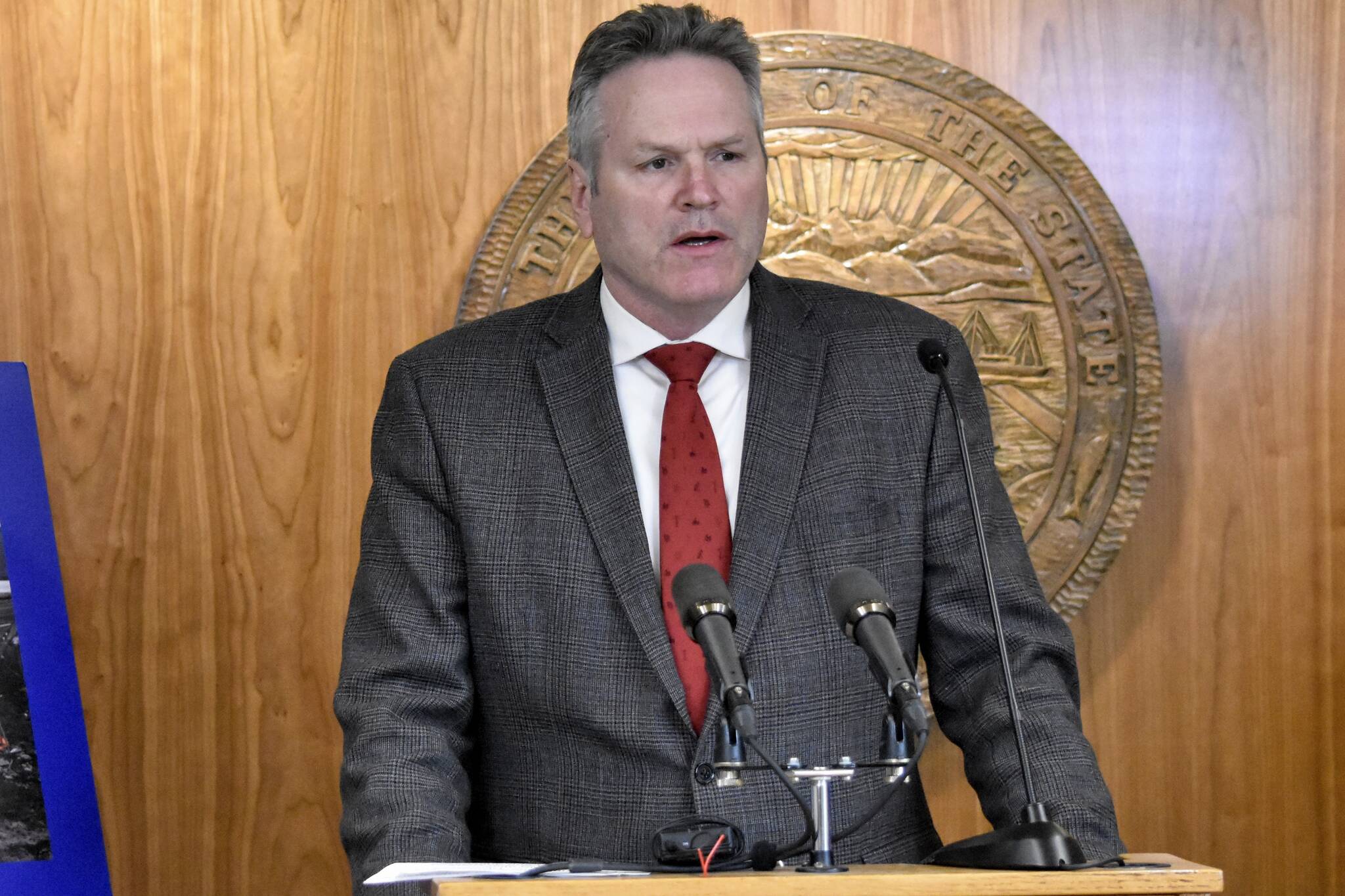Gov. Mike Dunleavy is calling for “at least” a $3,700 Permanent Fund Dividend this year after the state’s revenue forecast was updated to include the high price of oil in recent months.
At a news conference at the Alaska State Capitol Tuesday, Dunleavy said updated revenue projections showed the state with a $3.4 billion surplus, which he said should be passed to Alaskans.
“We can afford, I repeat, we can afford a much higher PFD than people are contemplating,” Dunleavy said.
The governor said the updated projections raised the forecasted price of oil from roughly $70 a barrel to $92 a barrel. In addition to the increased dividend payments, Dunleavy said the Legislature should place some of the money back into the state’s savings account, the Constitutional Budget Reserve.
The governor said the payments would help Alaskans deal with rising inflation, which according to the U.S. Bureau of Labor Statistics rose 7.9% over the last 12 months — the largest 12-month advance since July 1981. The Associated Press reported Wednesday the price of U.S. crude dropped to below $97 a barrel after starting the week at more than $109.
[Lawmakers move to pump the brakes on motor fuel tax]
Lawmakers have yet to settle on a dividend amount for this year, but both bodies have been hearing bills presenting different formulas for calculating the payments. Several lawmakers and the governor have said they support a so-called “50-50” dividend, that takes half of the annual percent of market value draw from the Alaska Permanent Fund and puts the money toward dividends.
But other bills being considered split the annual draw 75-25, with only a quarter going to dividends.
The House Finance Committee took public comment last weekend as it begins the process of finalizing its proposed bills for the operating and mental health budgets. An updated version of the budget will be released Wednesday, said Rep. Neal Foster, D-Nome, who co-chairs the House finance committee.
In a meeting with reporters Tuesday, Foster and other members of the House Majority Coalition said the governor’s budget projections assumed the price of oil would stay high and the proposed budget would reflect a more conservative estimate.
“That’s the number that has been thrown out, but I think that’s been based on very optimistic numbers,” Foster said of the governor’s estimate of $3.4 billion. “At the end of the day, you’re going to see money put in savings.”
Foster said the caucus was focused on education, and the updated bill provided back payments for school bond debt reimbursement and would forward fund education for the next year. Earlier this month, the majority announced a plan for an “energy relief check,” an additional payment of $1,300 paid alongside this year’s dividend.
A similar check was sent to Alaskans in 2008 amid similarly high oil prices.
But as the state finds itself with ample revenue, lawmakers noted the long-term goal of crafting a sustainable budget may become more difficult. With increased prices of oil and rising inflation, there was no appetite in the House to discuss new revenues such as an income tax, according to House Speaker Louise Stutes, R-Kodiak.
“There’s just not a lot of support for new revenue at this point, it just has not been on the front burner,” Stutes said. “Certainly there have been some serious conversations about a new formula for the PFD, but we’re still having those conversations.”
• Contact reporter Peter Segall at psegall@juneauempire.com. Follow him on Twitter at @SegallJnuEmpire.

